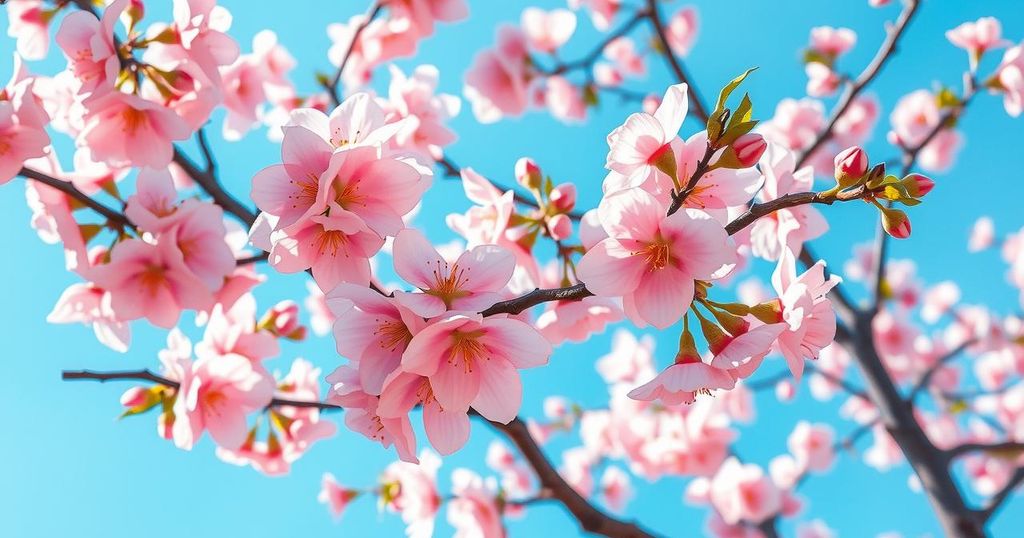Tokyo’s Cherry Blossoms Blooming Marks Start of Spring Festivities

Japan’s weather agency announces the blooming of cherry blossoms in Tokyo, marking the start of spring festivities. The first flowers were confirmed by officials at Yasukuni Shrine. The bloom is five days earlier than last year, reflecting cultural significance and potential climate change impact.
Japan’s Meteorological Agency has officially declared the blooming of Tokyo’s beloved cherry blossoms, or ‘sakura’, marking the start of the festive season in the capital. The announcement followed the examination of a Somei Yoshino tree at Yasukuni Shrine, where officials noted over five blossoms, which is the threshold for such an announcement. This year’s blooms arrived on schedule, five days earlier than the previous year, according to the agency.
The cherry blossom season typically peaks between late March and early April, with spectators frequently enjoying picnics and strolls under these iconic trees. Sakura hold significant cultural importance in Japan, symbolizing the transience of life, as they often represent themes of life, death, and rebirth in poetry and literature.
The blooming coincides with unseasonably warm temperatures in Tokyo, currently around 19 degrees Celsius (66 degrees Fahrenheit). Interestingly, this announcement followed the confirmation of the first cherry blossom bloom in Kochi, located on Shikoku island, just a day prior. The Japan Meteorological Agency (JMA) monitors over 50 benchmark cherry trees nationwide, anticipating their peak blooms within approximately ten days.
Moreover, cherry trees’ sensitivity to temperature fluctuations makes their blooming timelines a significant indicator for climate change research. In recent years, data suggests the cherry blossom season is starting earlier, raising concerns over potential impacts stemming from climate change.
In summary, Tokyo’s cherry blossoms have officially bloomed, marking the start of spring festivities. This declaration reflects both the cultural significance of sakura and the effects of climate trends, as blooming occurs earlier than average years. The Japan Meteorological Agency continues to monitor these changes, which are critical for understanding environmental impacts.
Original Source: guernseypress.com







